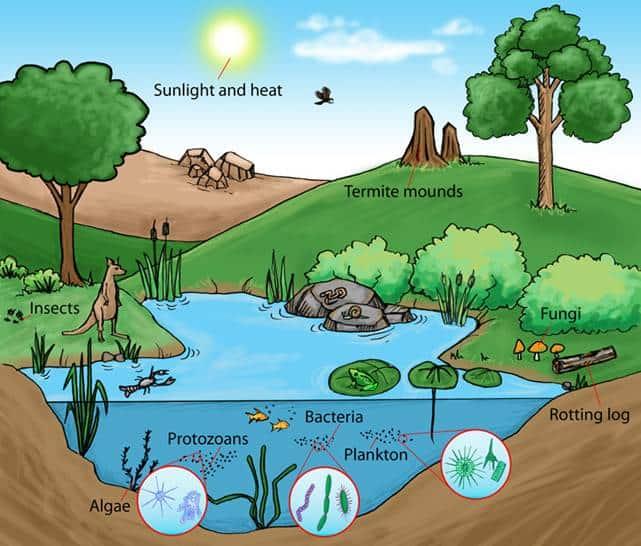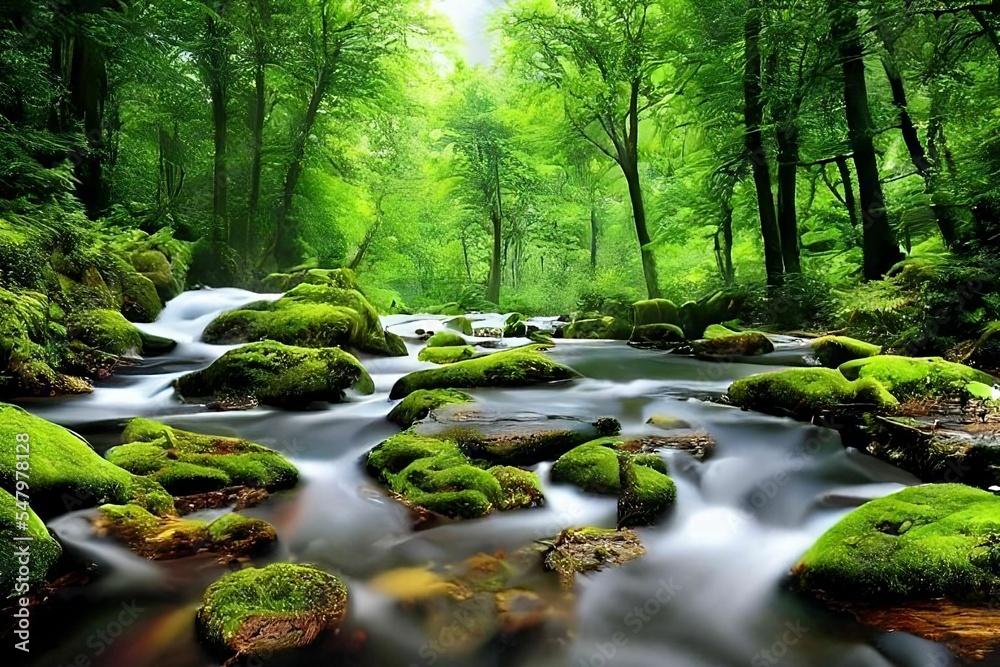In the delicate balance of our planet’s ecosystems, a silent yet profound dialogue unfolds — one woven from the whispers of the wind, the rustle of leaves, and the shifting tides of our oceans. “” invites readers to embark on an exploration of the intricate relationships that bind humanity to the natural world. As we navigate the impact of climate change, understanding these connections becomes crucial, for they illuminate not only the challenges we face but also the resilience inherent in the systems around us. In this article, we will delve into the nuances of environmental shifts, bringing to light the subtle signs that nature reveals, urging us to listen closely and respond wisely. Join us on this journey as we unravel the threads that connect our lives to the ever-evolving tapestry of Earth’s climate.
Table of Contents
- The Interconnected Web of Life: Understanding Ecosystems in a Changing Climate
- Youth Engagement: Empowering the Next Generation to Tackle Climate Challenges
- Innovative Solutions: Harnessing Technology for Sustainable Practices
- Community Resilience: Building Local Strategies to Mitigate Climate Impact
- Final Thoughts
The Interconnected Web of Life: Understanding Ecosystems in a Changing Climate

As climate change continues to reshape our world, the delicate balance of ecosystems hangs in the balance. Each organism, from the smallest microorganism to the largest predator, plays a critical role in maintaining the harmony of its environment. The interconnectedness of these life forms can be likened to a complex tapestry, where the threads represent species that weave together the fabric of life. When one thread frays—perhaps due to rising temperatures or shifting precipitation patterns—it can set off a cascade of effects, disrupting not only local habitats but also global systems. It’s essential to recognize that biodiversity is not just a luxury but the foundation for resilience, offering stability in times of stress.
Efforts to comprehend the impacts of climate change on ecosystems require a multifaceted approach. The following factors highlight this intricate web of interactions:
- Habitat Loss: Deforestation and urbanization reduce the living space for countless species.
- Species Migration: Many animals and plants are forced to move to survive, disrupting existing communities.
- Changes in Food Chains: Alterations in primary producers affect herbivores and, consequently, predators, leading to food security issues.
- Ecosystem Services: Healthy ecosystems provide clean water, air, and fertile soil, but their degradation threatens these vital resources.
| Climate Impact | Effect on Ecosystems |
|---|---|
| Temperature Rise | Shifts species distributions, leading to potential extinction |
| Increased CO2 | Promotes algal blooms, disrupting aquatic systems |
| Extreme Weather | Causes habitat destruction and increased stress on wildlife |
Through understanding and preserving these connections, we lay the groundwork for a more sustainable future, allowing nature’s whispers to guide us in mitigating the effects of climate change.
Youth Engagement: Empowering the Next Generation to Tackle Climate Challenges

Building a sustainable future hinges on the active involvement of today’s youth, whose creativity and passion can drive innovative solutions to the climate crisis. By fostering an environment that encourages collaboration, education, and action, we empower young people to become the stewards of their own communities. Initiatives such as hands-on workshops, digital campaigns, and local green projects equip them with the tools necessary to influence policy and advocate for change. With platforms to express their visions, young environmentalists can amplify the conversation around climate issues and lead initiatives that resonate within their neighborhoods.
To further support this movement, we can create structured programs that connect youth with mentors from various fields like science, policy, and conservation. These mentorships can take form through:
- Workshops: Skill-building sessions on topics ranging from renewable energy to sustainable agriculture.
- Internships: Opportunities in NGOs, governmental agencies, or local businesses focused on sustainability.
- Leadership forums: Platforms for sharing ideas and fostering communal projects.
By investing in these initiatives, we help cultivate a generation that not only understands the gravity of climate change but also possesses the tenacity and resources to combat it. In this collective journey, the voices of youth become woven into the very fabric of climate action, ensuring that the future is as vibrant as our planet itself.
Innovative Solutions: Harnessing Technology for Sustainable Practices
In a world where the echoes of nature often compete with the hum of technology, innovative approaches are crucial in weaving sustainable practices into the fabric of our daily lives. By leveraging advancements in technology, businesses and communities can implement solutions that not only mitigate environmental impact but also enhance efficiency and promote conservation. Smart grids, for instance, enable the optimization of energy distribution, allowing for the integration of renewable sources while minimizing waste. Similarly, precision agriculture utilizes data analytics to make informed decisions about crop management, ensuring that resources like water and fertilizers are used judiciously.
Moreover, the intersection of technology and sustainability opens doors to advancements like biodegradable materials crafted through innovative processes that reduce reliance on fossil fuels. Urban planning benefits from technologies such as 3D modeling and simulation, facilitating the design of green spaces that enhance biodiversity and community wellbeing. Below, a quick comparison highlights the impact of adopting these technologies:
| Technology | Benefit | Environmental Impact |
|---|---|---|
| Smart Grids | Efficient energy distribution | Reduced emissions |
| Precision Agriculture | Optimized resource use | Lower water waste |
| Biodegradable Materials | Alternative to plastics | Less landfill waste |
| Urban Planning Tech | Enhanced green spaces | Improved biodiversity |
Community Resilience: Building Local Strategies to Mitigate Climate Impact
In the face of climate change, local communities hold the power to create impactful strategies that not only address the immediate effects but also foster long-term resilience. By harnessing the collective strength and knowledge of community members, innovative solutions can emerge from grassroots efforts. Engaging residents in the planning process ensures that initiatives are tailored to local needs and resources, ultimately leading to a greater sense of ownership and commitment. Key elements of building such strategies include:
- Education and Awareness: Equipping community members with information about climate change impacts.
- Collaboration: Forming partnerships with local organizations and governments to enhance resource sharing.
- Green Infrastructure: Investing in sustainable developments like urban gardens and green roofs.
- Emergency Preparedness: Creating plans to respond effectively to climate-related disasters.
Furthermore, fostering adaptability within the community can take various forms, including supporting local agriculture, which enhances food security and reduces carbon footprints. Communities can implement programs that prioritize native plant restoration and biodiversity preservation to strengthen ecosystems against climate-related stressors. A focus on renewable energy sources can also be pivotal in reducing reliance on fossil fuels, while community workshops encourage skills development in sustainable practices. Below is a simple overview of potential action points:
| Action Point | Description |
|---|---|
| Community Workshops | Teach residents sustainable gardening and energy practices. |
| Local Renewable Projects | Initiatives to invest in solar and wind energy systems. |
| Disaster Response Training | Prepare residents for natural disasters through drills and training. |
Final Thoughts
As we draw the curtain on our exploration of “Nature’s Whisper,” we find ourselves at the crossroads of knowledge and responsibility. The multifaceted threads of climate change weave through our environment, economy, and society, echoing a powerful message that transcends the boundaries of science. It’s a reminder that our actions today resonate far beyond the present, rippling through the intricate fabric of our world.
In unraveling these threads, we realize that awareness is just the first step. Each whispered truth of nature calls us to listen, to understand, and to act with intention. As guardians of this planet, we hold the power to influence its future—shaping a narrative of resilience rather than despair, of collaboration rather than isolation.
Let these insights serve not merely as observations but as catalysts for discussion and action. Together, we can rewrite the story of our relationship with nature, fostering a deeper appreciation for the delicate balance that sustains life. As we move forward, let us carry the whispers of nature with us—an ever-present reminder of the urgent need for stewardship and harmony in the face of a changing climate. The journey is just beginning, and with each step, we have the opportunity to elevate our shared existence into a future that cherishes both humanity and the earth we call home.



